1. What M2M means?
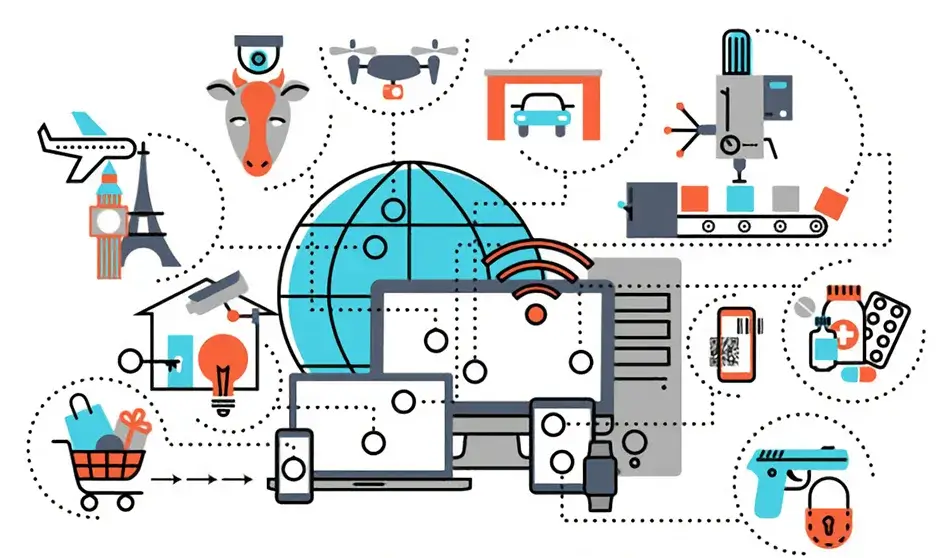
Machine to Machine (M2M) is the abbreviation of the machine to machine, indicating communication between devices. Devices can be allowed by M2M to communicate and operate without human intervention.
There are many explanations for M2M communication. Devices communicate over the Internet using wireless communication means such as GSM, 3G, and LTE. This is because the term M2M(M to M) came to be used to use mobile wireless communication networks such as GSM, 3G and LTE to expand the market to include communication between devices rather than between people. However, the essence of M2M is communication between machines, as the words say. GSM, 3G, AND LTE are convenient and efficient for connecting to wide-area communication networks in M2M communication. However, the essence of M2M is communication between devices, which can be done in a variety of ways. Therefore, M2M communication is turned off locally, and not only radio M2M is used but also wired M2M is used. The proper combination of these various means of communication enables communication between machines.
Today, in addition to M2M, the term IoT is used. In IoT, we consider communication centered around the Internet, but expand our goal to communicate with things other than machines.
In order to configure the best M2M system, functional and cost factors must be considered, rather than individual communication methods, combined with appropriate M2M communication methods.
2. Differences between M2M and IoT
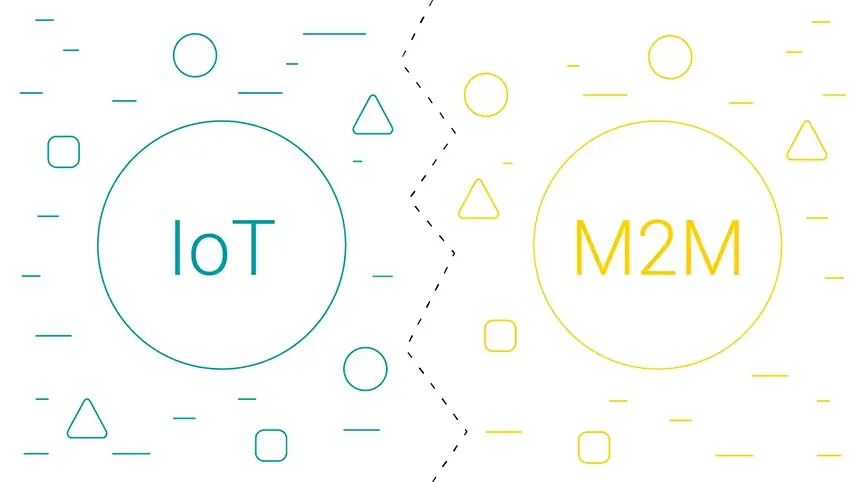
It’s been decades since companies have used M2M to remotely monitor factors such as power consumption, pressure, temperature, humidity, etc. The ATM’s internal computer is always communicating with the host processor. The bank then sends back the approval code via the main processor for completing the transaction.
As the entire transaction is conducted remotely without the need for manual operation on the bank side, the M2M technology is used as an example. The machine communicates smoothly, efficiently and automatically, allowing transaction authorization to be completed in seconds. With decades of history, M2M technology improves the ability to effectively communicate and execute transactions over long distances and in real-time around the world.
IIoT is an evolution of M2M that adds to the capabilities that device connectivity can be done at the enterprise and consumer levels. The Internet of Things extends the concept of M2M by creating large networks of “cloud” devices.
Examples of Internet-of-things devices are everywhere these days. The most high-profile examples are Google Home and Alexa. But, you will also find the purpose of evaluating employee performance, tracking shipments, and monitoring cargo temperatures. Any network of devices connected to the Internet and communicating with a cloud platform can be regarded as part of the IoT.
First, you should understand that IoT is a subset of M2M technology. IoT involves communication between machines without human input, but it expands the potential of M2M technology in revolutionary ways. The biggest difference between M2M and the Internet of Things is that M2M systems use point-to-point communication. At the same time, IoT systems typically place their devices in global cloud networks that allow large-scale integration and more complex applications.
Scalability is another essential difference between IoT and M2M. IoT is designed to be highly scalable because devices can usually be easily integrated into existing systems.
3. Similarities between M2M and IoT
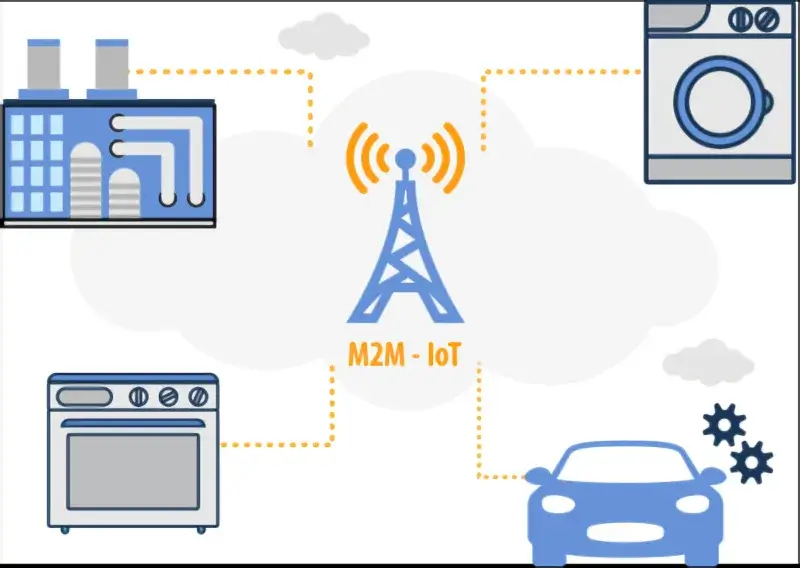
An in-depth look at M2M and Internet of Things communications, two interrelated technologies, reveals that they are very different in terms of network architecture and implementation requirements, but many components, such as rf modules, modems, switches, routers and gateways, are shared by them. Cellular connections and related data plans are other common denominators between the two networking technologies.
However, understanding these commonalities is critical to clarify the boundaries between M2M and IoT systems, as industrial automation designs can effectively consider security, connectivity availability and reliability, interface options, and RF stability requirements.
4. How Does M2M Work?
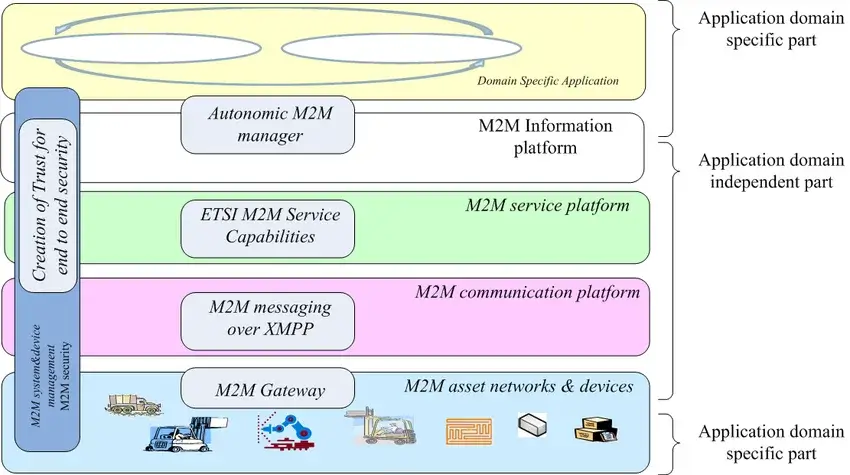
Product composition of M2M
M2M products are mainly composed of the following three parts:
Wireless terminals: these are special industry application terminals, not the usual mobile phones or laptops.
Transmission channel: The channel between the wireless terminal and the industrial application center of the client.
Industry application center: a convergence point where terminals upload data to monitor dispersed industry terminals. Features are strong industry characteristics, user management, and can be located in the enterprise or hosting.
The technical composition of M2M
There are five important technical parts in M2M: M2M hardware, middleware, machine, and communication network.
1. The machine
The first step in implementing M2M is to take the data from the machine/device and send it out over the network. Make the machine “talk”, so that the machine has information perception, information processing (computing power), wireless communication ability. There are two basic ways to make a machine “speak”: embed M2M hardware in the production equipment; Retrofit existing machines with communication/networking capabilities.
2. M2M hardware
The M2M hardware is the component that enables the machine to acquire remote communication and networking capabilities. Mainly for information extraction, from a variety of machines/equipment to obtain data, and transmission to the communication network. Currently, M2M hardware can be divided into five types: embedded hardware, assemblable hardware, Modem, sensor, and Location Tags.
1) Embedded hardware: Enable it to have network communication capability. Common products support CDMA, GSM/GPRS, or wireless mobile communication networks.
2) Assemblable hardware: Manufacturers have a large number of instruments that do not have networking capabilities and M2M communication. Implementations vary, including I/O Devices that collect data from sensors, perform protocol conversion, and send data to Connectivity Terminals on the communications network.
3) Modem: Acts as a Modem when transmitting data to the mobile communication network.
4) Sensors: sensors can be divided into ordinary sensors and intelligent sensors. Computing, communication capabilities, and senses are composed of a smart sensor. Information can also be passed to remote IT systems via GSM networks or satellite communication networks.
5) Location Tags: Identification Tags are like the “id card” of each machine and commodity, so that machines can be identified and distinguished from each other. RFID card technology and bar code technology are commonly used technology.
3. Communication network
Transmits the information to the destination. The communication network is in the core position of the whole M2M technical framework, including wide area network (wireless mobile communication network, satellite communication network, Internet, public telephone network), local area network (Ethernet, wireless LAN, Bluetooth), individual area network (ZigBee, sensor network).
4. Middleware
The middleware consists of two parts: the M2M gateway and the data collection/integration component. A gateway is a “translator” that takes data from the communication network and passes it to the information processing system. Completing the conversion between different communication protocols is its main function.
5. The application
The raw data are processed and processed in different ways, and the results are presented to observers and decision makers who need the information. These middleware include data analysis and business intelligence components, exception reporting and workflow components, data warehouse and storage components, etc.
5. Wireless technology used by M2M

When monitoring or controlling devices need to communicate through wireless networks, there are two candidate technologies: IEEE 802.11A/B/G WLAN and Zigbee.
Although they were originally designed for different purposes, each has its own advantages when it comes to wireless device-to-device (M2M) communication.
WLAN 802.11 was originally designed to replace wired Ethernet connections between computers. It is widely used in M2M applications, especially in industrial environments. It has complete Support for Ethernet layering, protocols, and network services.
WLAN
WLAN devices can work in peer-to-peer mode, but are more commonly used to communicate through wireless access points.
Zigbee
Zigbee also works at 2.4GHz, and its purpose is primarily to address device interconnectivity. It is a simple wireless networking solution for small devices such as sensors and even light switches that require very little bandwidth and power. Because it’s a mesh network, it doesn’t need a central access point. Zigbee to Ethernet protocol converters is commonly used to connect Zigbee networks to Ethernet based networks.
6. What is the main purpose of M2M
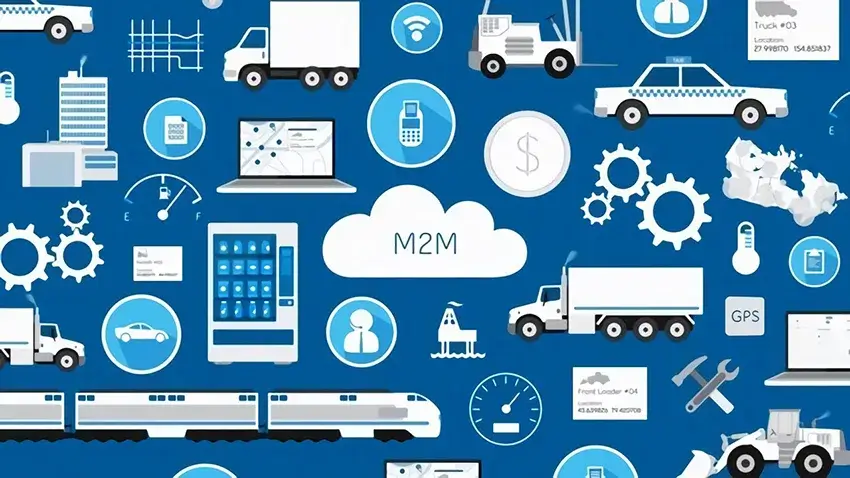
M2M(wireless M2M) is of great interest because it uses radio, thus greatly reducing the cost of communication cables, cable laying and maintenance. The advantage of M2M(wireless M2M) is that no wiring is required, so it is easy to increase the number of sensors and is easy to install. The advantage of M2M(wireless M2M) is that no rewiring is required when the layout is changed.
M2M(wireless M2M) system is suitable for houses, buildings, stores, hospitals, schools, factories, etc.
M2M’s wireless telephony extends the reach of M2M, enabling previously unpredictable things to communicate with each other.
Wireless M2M communication (wireless M2M communication) has a very wide range of applications for a variety of locations and applications. Wireless M2M communication (WIRELESS M2M communication) market is growing rapidly and is a market with high hopes. All outdoor and indoor locations require wireless M2M communication (wireless M2M communication). The following are some applications of wireless M2M communication (wireless M2M communication).
- Remote monitoring
- The remote measurement
- Disaster prevention
- The environment
- Energy
- Factory automation
- Process automation
- Maintenance
- Building
- Security
- Health care
- Intelligent home appliances
- The store
- Logistics
- Smart Agricultural
7. Value and opportunity of M2M
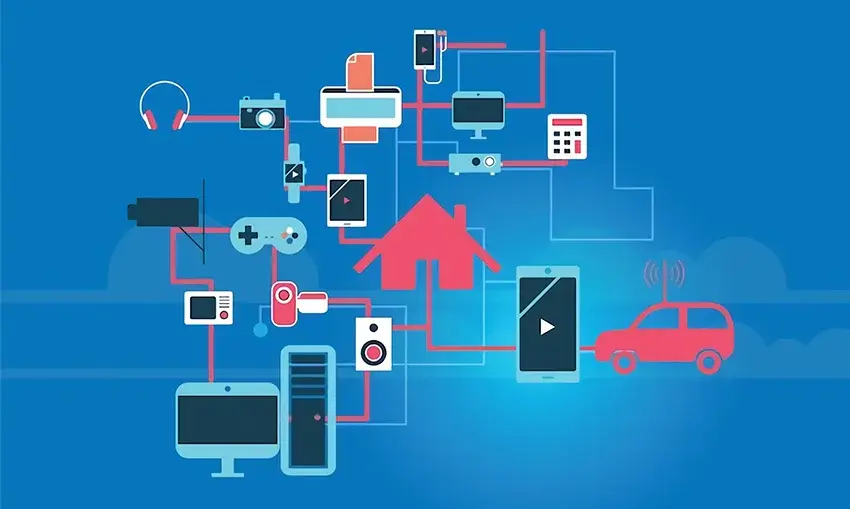
M2M ecosystem
M2M uses devices (sensors, meters) to capture “events” (stock water parity) transmitted over a network to applications that convert captured events into significant information.
Thus, the ecosystem has a defined hierarchy with a wide range of M2M-enabled devices implemented through embedded chipsets. These building blocks, as well as embedded wireless communication modules, can form a variety of customer devices/applications, such as cameras, sensors and card readers. These applications will then be deployed in consumer areas such as security, fleet management and healthcare devices, and interoperate in wireless technology.
M2M development opportunities
The main drivers of this industry initiative are:
Telematics and telemetry are increasingly seen as a source of operational efficiency and revenue.
The possibility of billions of addressable IP devices is created by the adoption of IPv6 technology.
The widespread roll-out of LTE and 3G networks provides higher bandwidth for devices that M2M departments can use in telematics display, remote video surveillance, and inventory tracking.
The BSS business unit of the industry is actively looking to monetize M2M applications as its traditional revenue streams run dry.
8. Advantages and benefits of M2M
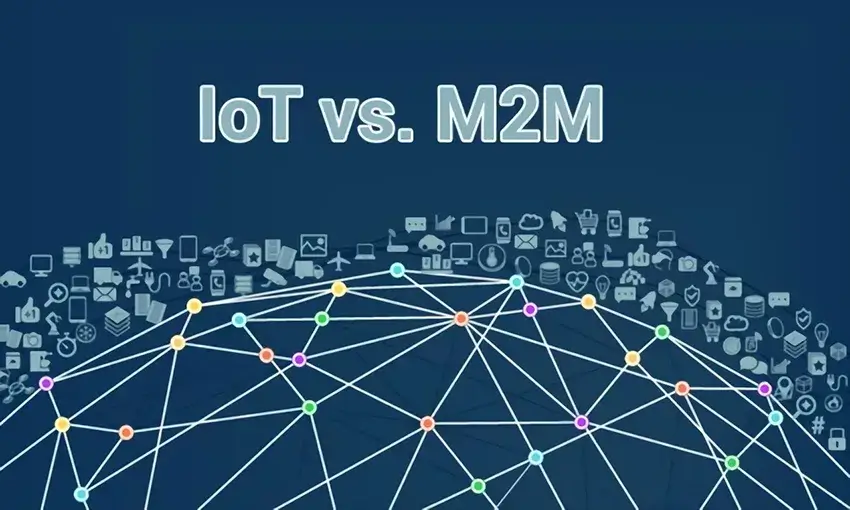
Reduce the cost
M2M improves efficiency while enabling automating tasks, and you’ll soon see that in costs. It allows you to do aggregate benefit calculations and speed things up. It can also be used to reduce waste, for example by monitoring goods in transit to ensure the optimum temperature so they don’t spoil.
Continue to communication
M2M never sleeps, which allows it to monitor and measure 24/7, 365 days a year — and you can access it from anywhere as the data is stored on a cloud-based connection management platform.
Extensible
Nothing is set in stone, and neither is your request. M2M is fully extensible, so it can evolve with your business.
Improve the quality
If you can perform tasks remotely, you can solve problems faster.
Focus on what’s important
You can focus your energy and time on more business development and profitable activities as M2M solution will handle many other business tasks for you.
Security
The M2M management platform and data transmission use encryption and authentication to ensure that data is always secure.
Work smarter
Once you connect the M2M device to the platform, you can begin to redefine the role in the enterprise and allow employees to do more productive work, since much of the administration is automated without human intervention.
Instant alarm
No matter your industry, M2M instantly alerts you to any problems — especially useful for healthcare facilities, maintenance services, logistics, and warehousing.
9.M2M Applications and Solutions
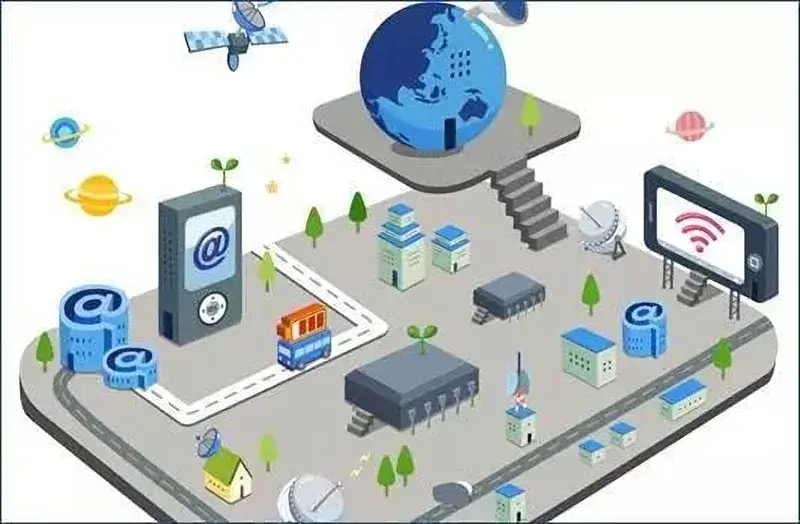
An M2M communication solution for the Internet of Things
Based on the analysis of the architecture and working principle of the M2M system and the application advantages of NAT traversal technology in the Internet of Things, an M2M communication scheme with user identity authentication based on STUN and STUNT protocols is proposed. The test results show that STUN Client and STUNT Client modules are embedded in M2M devices without changing the original network structure to enable communication and management between different M2M nodes in the Internet of Things.
Internet of Vehicles solutions for AT& TM2M communication system
M2M technology covers devices, networks, platforms, and applications, connecting machines through networks, exchanging information, and operating intelligent jobs. As early as 2012, AT&T, as the world’s leading wireless, Wi-Fi, high-speed Internet, voice, and cloud service provider, launched the first SIM card to travel around the world, accelerating the worldwide popularity of M2M technology. AT&T’s solution enables manufacturers around the world to integrate M2M connectivity into their products to reach every corner of the globe. Moreover, many developed regions have achieved seamless and reliable mobile coverage. Leverage new analytics and business intelligence solutions to extract the best from vast amounts of raw data for deeper insights.
Intelligent health application platform solution based on M2M
From the perspective of high-level vision, the implementation framework of the semantic functions of the Internet of Things is given, and the semantic functions supporting the Internet of Things applications are decomposed and modularized. Based on this framework, the semantic functions of the Internet of Things can be modularized. Through the overall architecture of the M2M system, the semantic architecture of the Internet of Things is constructed from the perspectives of the reference model, functional architecture and resource framework. By analyzing the semantic capability requirements of the Internet of Things platform for smart health application scenarios, a smart health application platform solution based on M2M semantics is proposed.
M2M platform overall solution
Firstly, this paper starts with the basic concept of M2M and analyzes the current problems faced by M2M services. Then, the definition, characteristics, and application scenarios of the M2M platform are described. Finally, the system networking, internal architecture, terminal management subsystem, and service management subsystem of the M2M platform are introduced.
11. Application cases of M2M
1. Intelligent meter reading
In the traditional working mode in the past, electricians to door-to-door meter reading, statistics of electricity consumption, and then statistics of electricity, often also meet residents not at home, to the next day or another day to come again, time-consuming and laborious not to say, but also often cause civil disputes. The system now consists of the power board’s distribution center and meter data collection points located in residential areas, using the operator’s network, and meter data is transmitted over a wireless network.
2. Vehicle positioning
The system consists of a GPS satellite positioning system, mobile vehicle terminal, wireless network and management system, GPS map, Web server, and user terminal.
The vehicle terminal consists of a controller module, GPS, wireless module, video image processing equipment, and information acquisition equipment. The onboard GPS navigation terminal receives navigation information through THE GPS module and can update the map in real-time through the wireless module. Vehicle terminal through the vehicle information collection equipment to collect vehicle status information through the wireless module uploaded to the management system so that the vehicle anti-theft system can realize interaction with the user terminal.
3. Supermarket fresh cabinet temperature and humidity monitoring system
Fresh products to ensure the storage temperature of food, the traditional method is to send people to do regular inspections, M2M technology provides a lower cost of choice, the establishment of temperature and humidity monitoring system.
4. Security video monitoring
The system consists of a picture and video acquisition terminal, wireless network and management system, Web server and user terminal. The picture and video acquisition terminal is composed of wireless modules, picture and video acquisition equipment, etc. The information can be directly uploaded to the user terminal through MMS and video phone, and then uploaded to the Web server in real time. The user can remotely browse the information through the Web browser.
Vending machines
Vending machines, which can be installed downstairs in the company building, hotel, packaging, logistics, roadside, through the monitoring of vending terminals, real-time allocation of goods according to the sales situation.
12. Development history of M2M
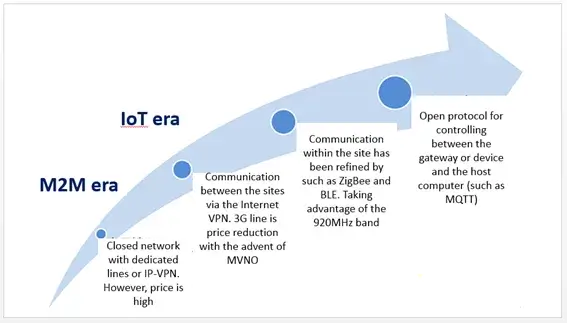
Telemetry (1845 to 1990s)
M2M systems began in 1845. It is the most basic form of wired data transmission network. By the mid-1990s, the technology had quickly moved from telephone lines to weather balloons to aerial telemetry. In 1973, IBM released the first mainframe computers (IBM 3650 and 3660). This ushered in a wave of technology that brought us innovations such as caller IDS (1968), electricity meters (1977) and single computer processing chips (1978).
M2M System (1990 to 2010)
Wireless connections had discovered myriad applications from vending machines to telemedicine by 1997. RFID technology also became mainstream in the mid-1990s. By 2010, the development of machine-to-machine solutions based on analog connections had reached its peak.
Internet of Things (2010-present)
The latest chapter in the history of M2M systems is IoT. The basic principles of device connectivity remain the same, but technology has evolved a lot. In 2012, cloud computing became prime time. With tech giants like Apple (which launched Homekit in 2014), Google, and Microsoft taking the Internet of Things seriously, the future of M2M systems looks uncertain.


















